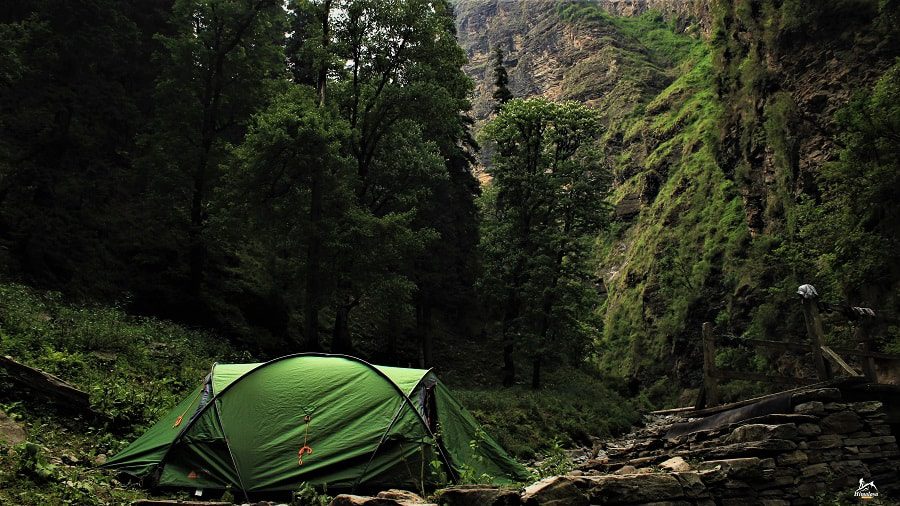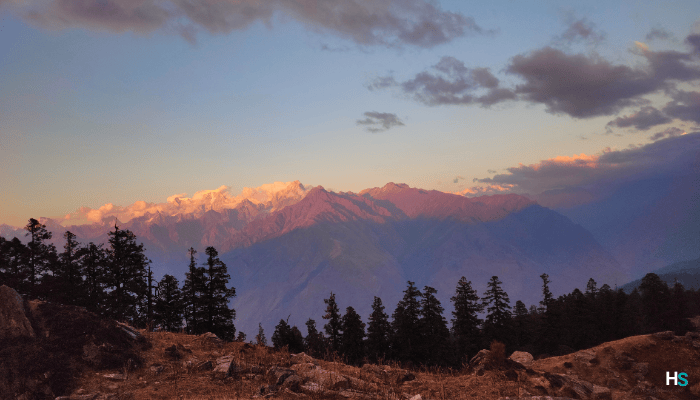
Solo Trekking vs Group Trekking :
Himalayan trekking offers an unparalleled escape into nature’s grandeur. You’ll find yourself surrounded by stunning landscapes, from snow-capped peaks to lush forests. Whether you opt for Solo trekking vs group trekking, your choice significantly impacts your overall experience, including the challenges you’ll face and the memories you’ll create.
In today’s post, you will get a detailed idea about solo versus group trekking in India. It will talk about the advantages and challenges associated with both solo and group treks in India. So, without further ado, let’s dive into the discussion.
Advantages of Solo Trekking:

Solo trekking provides a sense of complete independence that you won’t find elsewhere. You set the pace, decide which trails to follow, and when to take those much-needed breaks. This level of freedom translates into a fully personalized experience. You get to connect deeply with your surroundings, free from the distractions or demands of a group. The solitude can offer you introspective moments, enhancing your connection with nature.
Challenges of Solo Trekking:
You have understood the benefits of solo trekking in India, now, let’s talk about the challenges associated with solo trekking.
Safety is the biggest concern. You’re your own first responder, meaning if you get hurt or fall ill, help isn’t readily available. This factor makes planning and precautionary measures essential.
Another challenge is navigation. Trail signs and maps can help. But you need to navigate alone, especially on less-marked trails. This certainly becomes a test of your orienteering skills.
Advantages of Group Trekking:

Trekking in a group provides a different set of benefits.
First, it offers safety. More people mean extra help in emergencies. If you face any sort of trouble, from a twisted ankle to a sudden weather change, you have others to rely on.
Sharing responsibilities is another plus. Tasks like setting up tents, cooking meals, or carrying common supplies are divided among the group, making life on the trail easier for everyone.
Third, social bonding happens naturally. The trek becomes a way to make new friends or grow closer to existing ones.
Fourth, motivation levels stay high. Group energy keeps you going when the trail gets tough.
Lastly, shared costs make the adventure more affordable. You can split expenses like guides and transportation.
Overall, group trekking makes for a safer, more enriching, and cost-effective experience.
Challenges of Group Trekking:
Though group trekking in India has various benefits, it has drawbacks too.
The first and foremost challenge associated with group trekking is coordination. Maintaining smooth coordination among group members often seems tough. With a diverse group, agreeing on a pace or rest stops can be tricky.
Second, varying fitness levels can create issues. Some may find it hard to keep up, causing delays.
Third, cultural differences matter. In a multi-ethnic country like India, hygiene, and customs can cause misunderstandings.
Fourth, larger groups have a greater environmental impact. Littering and noise can disturb local wildlife.
Finally, more people mean more permits and logistical hurdles, such as transportation and accommodation. These challenges can complicate what should be an enjoyable adventure.
Factors to Consider:
When planning a trek, you’ve got several key factors to ponder. Your physical fitness and experience level should align with the trek you pick. You should also budget appropriately, keeping in mind possible extra costs like gear rentals or permits. Time is another constraint; make sure your schedule aligns with the trek’s duration. Don’t underestimate the importance of packing. Carry essential gear, suitable clothing, and a well-stocked first aid kit. Lastly, managing food and water is crucial. Know where you can replenish supplies or consider carrying enough for your journey.
Solo Trekking vs Group Trekking: Detailed Comparison
Solo and group trekking offer distinct experiences when it comes to route and destination selection. As a solo trekker, you have the ultimate say, but you’re also solely responsible for accommodation and logistics. Costs can be more flexible but require careful planning. Social interactions are limited but often more profound.
On the flip side, group trekking often comes with a pre-decided route and bundled accommodation and logistics. The cost is usually a fixed package price, which may or may not offer value for money. However, social interactions and networking opportunities are much easier to come by.
Final thoughts,
Your ideal Himalayan trek is out there, waiting for you. Whether you want the independence of solo trekking or the camaraderie of a group, each offers unique rewards and challenges. By considering factors like fitness, budget, and time, and weighing the pros and cons of each trekking style, you can make an informed decision for an unforgettable adventure.
FAQs:
What are the benefits of group trekking in the Himalayas?
Are permits and regulations different for solo and group trekkers in the Himalayas?
What equipment and gear are essential for solo trekkers in the Himalayas?
Is it more cost-effective to trek solo or in a group in the Himalayas?
What should I do in case of an emergency while solo trekking?
About Author

Himalaya Shelter
Recent news

20 Dec 2025

18 Dec 2025

16 Dec 2025

10 Dec 2025
